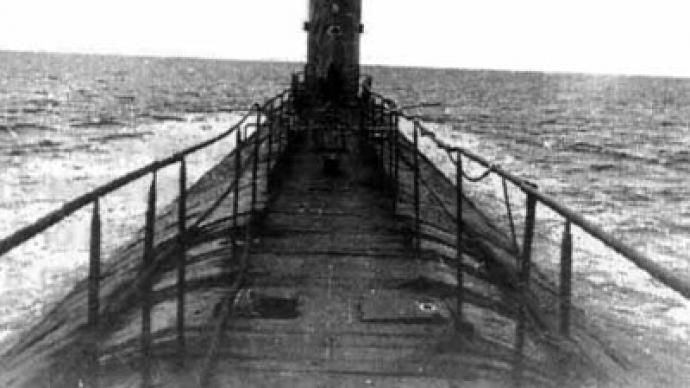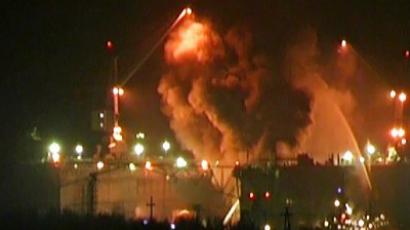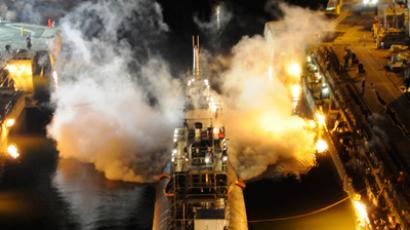'Nuclear time bomb:' Downed K-27 submarine must be lifted out

A Soviet K-27 submarine suffered a nuclear accident before being dumped at the bottom of the Kara Sea 30 years ago. Russia may now have to lift the sub from dangerously shallow waters – before an “uncontrolled chain reaction” causes fatal damage.
“Radiation leakages will come sooner or later if we just leave the K-27 there. The sub has already been on the seafloor for 30 years, and it was rusty even before it was sunken. Leakages of radioactivity under water are nearly impossible to clean up,” Thomas Nilsen, a nuclear safety expert who has extensively mapped radioactive waste on the Arctic seabed, told RT.Equipped with an experimental liquid-coolant nuclear engine, the K-27 was ill-fated from its launch in 1962. It made only three voyages, the last of which, in 1968, ended in tragedy. A short way from its base in the Barents Sea, its reactor malfunctioned, and the brave but badly-trained crew made a futile attempt to fix it. Instead of solving the problem, they were exposed to fatal doses of radiation. Nine seamen died, most of them in hospital in agony from radiation sickness several days after the accident. The incident was kept secret by the Soviet government for decades, and the families of the victims received no compensation.After repeated plans to redesign the sub, Soviet authorities decided it was easier to dispose of it, and towed the vessel to a remote test site in the Kara Sea, near the Arctic Ocean, in 1981.Although international guidelines say decommissioned vessels should be buried at least 3,000 meters under the sea, the Soviet Navy scuttled it at around 75 meters.Now, what was once one of the most remote places on Earth has become a hub of commercial activity, with the melting ice caps providing greater opportunities for shipping, and oil companies waiting to drill the seabed below the waves.Earlier this year, environmental NGO Bellona claimed that the submarine may be reaching critical status, and now a joint Russian-Norwegian expedition is studying the site of the accident. It is expected to publish its findings in the coming weeks.
Big Oil to the rescue
Experts believe that the sub will eventually have to be removed from its current resting place."Russia must take responsibility for their own waste financially,” Bellona’s Igor Koudrik told the Barents Observer newspaper.But so far, the government has not allocated any funds towards the operation.Nilsen believes that the operation will be expensive – costing “tens of millions of euro” – and hazardous.“Our challenge today is to find a way to lift it without shaking the reactors so much that an uncontrolled chain-reaction doesn't start. If that happens, a large amount of radioactivity can leak out to the fragile Arctic marine environment,” Nilsen said.The increasing presence of energy companies will not necessarily add to the problem, but could provide a solution – if they pay for the lifting of the sub.Russian giant Rosneft is conducting a seismic study of the Kara Sea, with a view to drilling its rich oil reserves. The potential profits could make the multi-million-euro extraction costs seem a fair price to pay for avoiding a nuclear accident.Unfortunately, even if the danger of the K-27 is defused, others still lurk at the bottom of the sea.The Russian government has recently released archives showing that there are 17,000 containers of radioactive waste, 19 ships contaminated ships, and 14 nuclear reactors in the Kara Sea – and most of these objects have been decaying there since the Soviet era.














